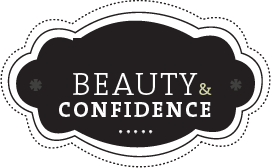Secrets to Breathing Better With Allergies
Warmer weather triggers trees, flowers and grasses to bloom, beckons kids back outside and sets off seasonal allergy suffering for 40 percent of those kids. Pollens, which have been dormant all winter, are abundant from spring to fall. These irritants gang up with existing indoor allergens (such as dust mites, pet dander and mold) and bully your child's immune system, causing itchy, watery eyes, runny noses, sniffling, sneezing and coughing.
“While allergens are unavoidable, there are things you can do to reduce your child's exposure to them," says Dr. Rebecca Gruchalla, professor of internal medicine and pediatrics at the University of Texas Southwestern Center in Dallas.
Try these tricks for keeping allergens to a minimum:
1. Make plans based on pollen counts.
Plan indoor activities when outdoor pollen counts are highest – every day before 10 a.m., on windy days and after it rains. Check pollen.com for the daily allergy forecast in your area.
2. Control the spread of allergens.
After a day of fun outside, have the kids take showers, wash their hair and put on clean clothes before they're allowed to play in their rooms. You don't want them tracking pollen into their bedrooms since allergy symptoms are often worse at night.
3. Manage indoor air quality.
Keep windows closed during pollen season and crank up the air conditioning to help filter the air in your home. An indoor air temperature between 68 F and 72 F inhibits mold and dust mite growth and helps the indoor humidity level stay at an ideal 30 to 40 percent.
4. Keep bedding healthy.
Dress your child's bed using linens made of cotton or synthetic materials as opposed to bedding filled with feather or down, which can trap moisture and invite dust mites to spread. Dust mites produce a protein that can irritate the nasal passage and cause sneezing and a runny nose. To get rid of them, wash your child's sheets once a week. Wash the comforter, mattress pad and blankets once a month. And never hang linens or clothes to dry outside, where they can gather pollen.
5. Clean stuffed animals and toys.
Only buy washable stuffed animals and throw them in the laundry with the bedsheets every week. And when they're not being loved, store stuffed animals -- and all toys -- in sealed, dust-free plastic containers.
6. Use allergen-resistant covers.
Wrap the mattress, box spring and pillows in allergen-resistant covers to reduce your child's exposure to dust mites by as much as 80 percent.
7. Keep floors free of irritants.
Vacuum the floors in kids' rooms twice a week using a cyclonic machine or one outfitted with a high-efficiency particulate air (HEPA) filter. Keep kids out of the bedroom for at least 30 minutes afterward, since vacuuming kicks up allergen-filled dust that can irritate allergies.
8. Move moisture out of the bathroom.
Bathrooms tend to accumulate water around the shower, tub and sink areas, keeping the room moist and susceptible to mold growth. Control moisture by making sure wet towels and clothes are hanging so they're able to dry. After showers, allow the curtain or door to air-dry before pulling it closed. And to keep air flowing and remove moisture, leave a fan on after showers and baths.
9. Prevent pet allergens.
Pets produce more allergens than the great outdoors. Don't let your furry friends into the kids' rooms. Wash and brush Fido -- outside -- once a week to decrease the dander inside.
10. Equip bedroom with a HEPA air filter.
If your child has severe allergies, consider putting a HEPA air filter in the bedroom. Check the CADR (Clean Air Delivery Rate) label, which indicates the size of room it's best for.




